How to Choose the floor stage lights manufacturer and supplier in us?
- Why choosing the right floor stage lights manufacturer and supplier matters
- Understand your needs before evaluating manufacturers
- Key product performance metrics to compare for floor stage lights
- Photometric and electrical standards to request
- Certifications and regulatory compliance for US distribution
- Manufacturing capacity, lead times, and MOQ considerations
- Example metrics to verify with suppliers
- OEM/ODM capabilities and customization for commercial floor stage lights
- Quality control, testing, and durability for floor stage lights
- After-sales support, spare parts, and warranty terms
- Control systems and interoperability for floor stage lights
- Packaging, shipping options, and logistics to the US
- Cost vs value: evaluating price, total cost of ownership, and ROI
- How to verify supplier credibility and reputation in the US market
- Questions to ask every potential floor stage lights manufacturer and supplier
- Sample comparison table: How to score potential suppliers
- Red flags to watch for when choosing a floor stage lights supplier
- Case study: Why a US buyer chose a high-capacity OEM
- How LQE’s capabilities align with US buyer needs for floor stage lights
- Checklist: Final steps before signing with a floor stage lights manufacturer
- Conclusion: Make a commercial decision based on data and support
- Sources
- Frequently Asked Questions
Why choosing the right floor stage lights manufacturer and supplier matters
Selecting the right floor stage lights manufacturer and supplier is a commercial decision that affects show quality, uptime, and total cost of ownership. Whether you are a US rental house, production company, or venue buyer, the supplier you pick determines product reliability, compliance for US markets, and available technical support.
Understand your needs before evaluating manufacturers
Define your application: theatrical concerts, TV studio, corporate events, house of worship, or theme parks. Identify required features for floor stage lights such as luminous output, beam angle, color mixing (RGB/CMY), control protocols (DMX, RDM, Art-Net, sACN), IP rating for outdoor use, and physical footprint. These requirements will guide which manufacturers can meet your specifications.
Key product performance metrics to compare for floor stage lights
Compare fixtures using objective, testable criteria: lumen output, LED efficacy (lm/W), CRI, color temperature range, beam angle, refresh rate, and power consumption. For professional stage LED fixtures, expect typical systems to achieve 80–140 lm/W, adjustable beam angles from 4° to 60°, and CRI 70–90+ depending on model. Request LM-79 and LM-80 reports where applicable to validate lumen maintenance and photometric performance.
Photometric and electrical standards to request
Ask for LM-79 (photometric measurements) and LM-80 (LED lumen maintenance) test reports to verify long-term performance. For US market compliance, request documentation for UL/ETL (safety), RoHS (restricted substances), and FCC (EMI) where appropriate.
Certifications and regulatory compliance for US distribution
US buyers must ensure products meet local safety and electromagnetic requirements. Look for UL 1598 or ETL listing for luminaires and UL 8750 for LED equipment. CE and RoHS show European/environmental compliance but do not replace UL/ETL. If the supplier provides FCC Class A/B test results, it reduces risk of interference in broadcast/studio environments.
Manufacturing capacity, lead times, and MOQ considerations
Understand a manufacturer's production capability and typical lead times. For US supply chains, manufacturers with predictable lead times (commonly 6–12 weeks for full production runs) and flexible MOQ options are preferred. Large-scale suppliers often offer faster replenishment and better pricing for bulk purchases; smaller manufacturers may be better for rapid prototyping and low-volume OEM orders.
Example metrics to verify with suppliers
Ask suppliers to confirm: annual production capacity, sample lead time, standard MOQ, and ramp-up ability for seasonal demand. LQE, for example, states an annual production capacity of up to 100,000 fixtures and a production base of about 10,000 sqm — useful context for buyers evaluating volume capability.
OEM/ODM capabilities and customization for commercial floor stage lights
If you're a lighting designer or brand owner, confirm the manufacturer's OEM/ODM capabilities: custom firmware, optics, housings, control protocols, and logo/packaging options. A manufacturer with in-house R&D and patent holdings (LQE reports 80 national patents) can translate design changes into production faster and protect IP-sensitive projects.
Quality control, testing, and durability for floor stage lights
Reliable suppliers implement rigorous QC: incoming component testing, in-process inspections, and final burn-in (48–168 hours) under load. Verify what test steps are standard (e.g., color binning, waterproof tests for IP-rated fixtures, vibration and drop tests for touring gear) and whether the supplier provides IES/IESNA photometric files for your lighting design software.
After-sales support, spare parts, and warranty terms
After-sales service is a commercial differentiator. Confirm warranty length (1–5 years typical for LED fixtures), availability of spare parts, repair turnaround time, and local service partnerships in the US. Ask if the supplier offers extended warranty, exchange programs for rentals, and technical training for staff.
Control systems and interoperability for floor stage lights
Floor stage lights must integrate into your control ecosystem. Verify support for DMX512, RDM, Art-Net, sACN, and modern protocols like NDI where relevant. Also confirm compatibility with popular lighting consoles and whether the supplier provides fixture profiles for consoles such as GrandMA, Hog, and ETC.
Packaging, shipping options, and logistics to the US
Logistics determine landed cost and delivery predictability. Discuss incoterms (FOB, CIF, DDP), typical transit times by sea (20–40 days) vs air (3–10 days), and whether the manufacturer uses durable, flight-case friendly packaging for rental/touring markets. Ask about consolidation, freight forwarder recommendations, and customs documentation to reduce import delays.
Cost vs value: evaluating price, total cost of ownership, and ROI
Lowest price rarely delivers best long-term value. Compare total cost of ownership including purchase price, energy consumption (lm/W), maintenance, spare parts pricing, and expected lifetime (L70 hours from LM-80). Higher-efficiency LED engines and robust housings may cost more upfront but lower operating costs and downtime.
How to verify supplier credibility and reputation in the US market
Check references, customer case studies, and third-party distributor feedback. Look for visible installations in US venues similar to your projects. Request contact details for current US customers and ask about on-site technical support history and warranty claim experiences.
Questions to ask every potential floor stage lights manufacturer and supplier
Prepare a commercial RFP checklist: Ask for certifications (UL/ETL), LM-79/LM-80/Ies files, production capacity, sample policy and cost, MOQ, factory audit records, warranty terms, spare part lead times, and whether they can provide a US-based service partner or spare stock depot.
Sample comparison table: How to score potential suppliers
Use a simple weighted table to score suppliers on critical commercial criteria like compliance, performance, capacity, and support. Below is a template you can use during evaluations.
| Criteria | What to request | Good benchmark |
|---|---|---|
| Certifications | UL/ETL, RoHS, FCC, LM-79/LM-80 | UL/ETL & LM-79/80 provided |
| Photometric performance | Lumens, CRI, lm/W, beam angle, IES files | lm/W 80–140; CRI ≥80 for whites |
| Production capacity | Annual output, lead time | Ability to fulfill orders on 6–12 week cycles |
| Warranty & support | Warranty length, spare parts availability, US partner | 2–5 year warranty; spare parts stock in US |
| OEM/ODM & R&D | Customization, patents, development timeline | In-house R&D, patent portfolio |
Red flags to watch for when choosing a floor stage lights supplier
Be cautious if a supplier cannot provide test reports, does not welcome factory audits, has inconsistent lead times, lacks spare parts inventory, or refuses to supply sample units. Also be wary if the supplier claims unrealistic performance without third-party verification.
Case study: Why a US buyer chose a high-capacity OEM
A US rental group needed 400 touring floor stage lights with short delivery and US safety compliance. They prioritized a supplier with documented annual capacity, UL/ETL test reports, a US spare-part depot, and OEM customization for flight-case dimensions. The selected supplier offered sample testing, a 3-year warranty, and partnered with a US-based service team for warranty repairs — reducing downtime and simplifying logistics.
How LQE’s capabilities align with US buyer needs for floor stage lights
LQE, founded in 2008 and headquartered in Foshan, China, is an OEM/ODM manufacturer focused on mid- to high-end digital stage lighting. LQE’s production base (~10,000 sqm) and claimed annual capacity (up to 100,000 fixtures) indicate strong volume ability for US orders. With 80 national patents and an emphasis on R&D, LQE can support customized floor stage lights, provide technical documentation, and scale production to meet rental or venue demands.
Checklist: Final steps before signing with a floor stage lights manufacturer
Before committing, run these final checks: obtain physical samples and run them through your workflow; confirm UL/ETL/LM-79/LM-80 paperwork; validate spare parts lead times; agree on warranty terms and RMA process; establish agreed incoterms and delivery schedule; and, if possible, conduct a third-party factory audit or site visit.
Conclusion: Make a commercial decision based on data and support
Choosing a floor stage lights manufacturer and supplier for US operations is not just about product specs — it’s about compliance, predictable supply, after-sales support, and total cost over the product lifecycle. Use objective test reports, validate production capacity, require clear warranty and service commitments, and prefer suppliers who can demonstrate US market experience or local support. That approach reduces risk and ensures your lighting investments perform reliably in real-world US productions.
Sources
- IESNA LM-79 and LM-80 industry standards (photometric and lumen maintenance testing).
- UL standards for luminaires (UL 1598) and LED equipment (UL 8750) — widely used in US safety compliance.
- Typical LED efficacy trends and CRI expectations from lighting industry publications (trade journals up to 2024).
- Company-supplied data: LQE corporate profile, production capacity, patents, and founding year.
Frequently Asked Questions
Q: What certifications are absolutely required for importing floor stage lights into the US?A: For legal and commercial safety in the US, UL or ETL listing for luminaires (UL 1598) and LED components (UL 8750) are strongly recommended. RoHS and FCC (for EMI) are also important depending on the product. Request test reports and listings before purchase.
Q: How long should I expect lead times to be for custom floor stage lights?A: Typical lead times range from 6 to 12 weeks for production after sample approval, but this depends on order size, customization level, and current factory load. Expedited air shipments for smaller sample orders can be 3–10 days.
Q: Are LM-79 and LM-80 test reports necessary for evaluating LED fixtures?A: Yes. LM-79 provides photometric and electrical measurements for the whole fixture; LM-80 gives long-term lumen maintenance data for the LED package. Both help you forecast performance and maintenance intervals.
Q: What warranty length should I expect for commercial floor stage lights?A: Warranties typically range from 1 to 5 years. For rental/touring environments, a 2–3 year warranty with accessible spare parts and a fast RMA process is preferred.
Q: How do I handle spare parts and repairs in the US when buying from a foreign manufacturer?A: Negotiate spare parts inventory held in the US or a regional distributor, agree on RMA and repair SLAs, and consider a local service partner for faster turnaround. DDP shipping terms can simplify logistics for spare parts.
Q: Should I prioritize price or reliability when selecting a supplier?A: Prioritize reliability and documented performance for professional applications. Lower upfront price can increase lifetime costs via higher energy use, more downtime, and increased maintenance.
Why choose LQE as your stage lighting led supplier
What are the different types of par lighting?
The 10 Key Factors in stage par lights That Affect Cost
Top 10 professional performances stage lighting Manufacturers and Supplier Brands
1000w
Do You Supply After-Sale Service?
LQE lighting offers 7x24 hrs systematic SOP customer support with dedicated personnel, ensuring quick and comprehensive assistance for stage lighting needs.
Does LQE Offer a Stage Light Design Solution?
LQE experienced team glad to supply a stage lighting configuration design solution or suggestion for projector who don’t have much experience in lighting design, project, theatre and studio.
Distributor
What are the advantages of becoming an LQE distributor?
Access to high-performance, patented lighting products
Competitive factory pricing and excellent profit margin potential
Strong R&D capabilities with 80+ national patents
Reliable production capacity: 100,000 units annually
Dedicated account manager to support your growth
Is there a minimum order quantity (MOQ) to become a distributor?
MOQ requirements vary based on the product line and market region. However, for long-term distribution partnerships, we are flexible and can start with a trial order to build trust.
What is your typical lead time for distributor orders?
Our standard production lead time is 15–30 working days depending on order volume and customization requirements. For stocked models or repeat orders, we can offer shorter delivery times.
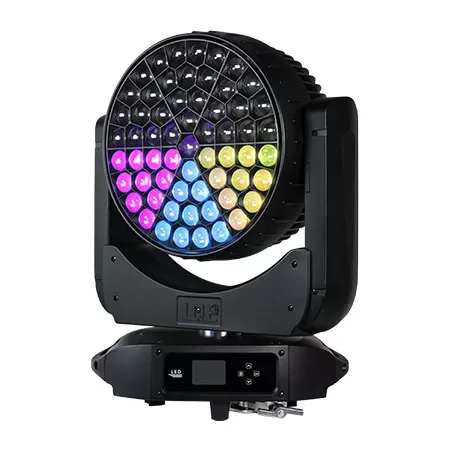
1000w 61x40w RGBW Stage Moving Head Wash Light LW1000
1000W 61x40W LED RGBW Mulichips Moving Head Wash Lights with Zoom (5°–50°), Covering Large Range and Long Distance. Designed to deliver a 5°–50° ultra-large zoom range to achieve a greater wash effect, illuminating stages and events with stunning lighting effects.

600w 19x40w RGBW Stage Moving Head Wash Light LW600 Zoom IP20
600W 19x40W LED RGBW Mulichips Moving Head Wash Lights with Zoom (5°–50°), Covering Large Range and Long Distance. IP20: Designed to deliver a 5°–50° ultra-large zoom range to achieve a greater wash effect, illuminating stages and events with stunning ring control lighting effects.

LED Moving Head Stage Wash Light LW200Z
The versatile moving head stage light provides a powerful lighting solution for theaters, concerts, and large outdoor performances. Suitable for theaters, TV stations, entertainment stages, and large outdoor performance scenes.
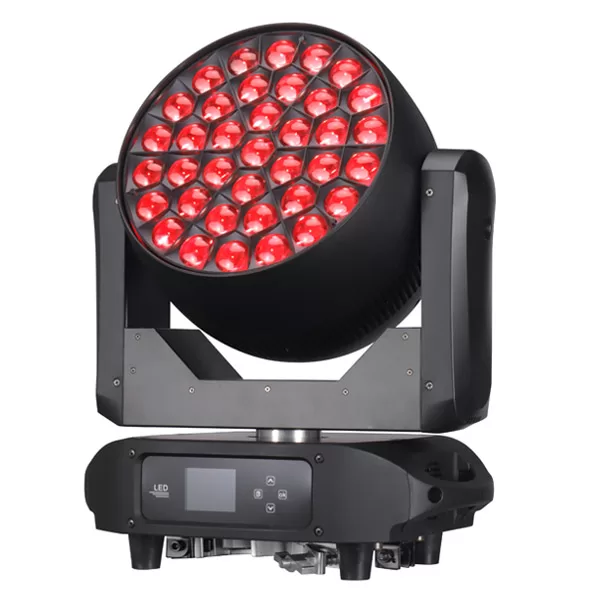
800w 37x40w RGBW Stage Moving Head Wash Light LW800
800W 37x40W LED RGBW Mulichips Moving Head Wash Lights with Zoom (5°-50°), Covering Large Range and Long Distance. Designed to deliver a 5°–50° ultra-large zoom range to achieve a greater wash effect, illuminating stages and events with stunning ring control lighting effects.

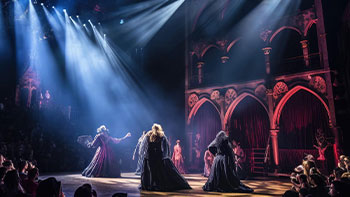
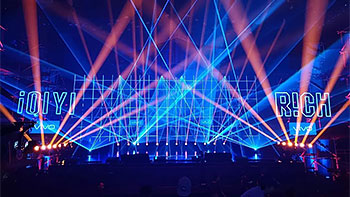

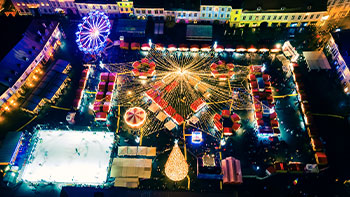








Linkedin
YouTube
Whatsapp: +8618924548390
TikTok